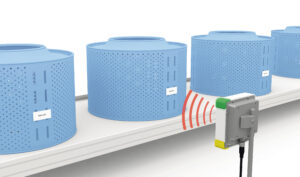In the realm of industrial automation, the quest for efficiency, precision, and seamless integration has led to the development of advanced communication protocols. One such protocol that has significantly transformed the landscape is IO-Link. This article delves into the evolution of IO-Link, highlighting its advantages in simplifying installation and maintenance, as well as enhancing sensor accuracy.
The Genesis and Evolution of IO-Link
Introduced in 2009, IO-Link emerged as a standardized communication protocol aimed at bridging the gap between sensors, actuators, and control systems. Managed by the IO-Link Consortium, the technology has seen rapid adoption, with over 100 member companies by 2016 and millions of nodes implemented worldwide. Initially designed to enhance basic switching sensors, IO-Link has evolved into a sophisticated interface supporting a wide array of devices, including complex measurement sensors and actuators.
Simplifying Installation and Maintenance
One of the standout benefits of IO-Link is its ability to streamline installation and maintenance processes:
-
Standardized Cabling: IO-Link utilizes unshielded, standard three or five-conductor cables, eliminating the need for specialized wiring. This simplification reduces installation costs and minimizes potential wiring errors.
-
Remote Configuration and Monitoring: With IO-Link, devices can be configured and monitored remotely. This capability allows technicians to adjust sensor parameters or update device settings without physically accessing the equipment, leading to significant time savings and reduced downtime.
-
Efficient Device Replacement: In the event of a device failure, IO-Link masters can automatically recognize and configure replacement devices using stored parameters. This plug-and-play functionality ensures swift device replacement, minimizing operational interruptions.
Enhancing Sensor Accuracy
Accurate sensor data is crucial for optimal industrial operations. IO-Link contributes to improved sensor accuracy through:
-
Digital Communication: Traditional analog signals are susceptible to interference and signal degradation. IO-Link’s digital communication ensures high-fidelity data transmission, preserving the integrity of sensor readings.
-
High-Resolution Data: IO-Link supports 16-bit data resolution, offering greater precision compared to traditional analog signals, which typically range from 8 to 16 bits. This higher resolution enables more accurate monitoring and control of industrial processes.
-
Comprehensive Diagnostics: Beyond basic data transmission, IO-Link provides detailed diagnostic information, such as signal quality and device status. Access to this data allows for proactive maintenance and swift troubleshooting, further enhancing overall system accuracy.
Encouraging the Transition to IO-Link
For industries reliant on precise sensor data and efficient system operations, transitioning to IO-Link-enabled devices offers compelling advantages:
-
Increased Uptime: Enhanced diagnostics and remote monitoring capabilities facilitate predictive maintenance, reducing unexpected downtimes.
-
Cost Savings: Simplified wiring and reduced maintenance efforts translate to lower operational costs over time.
-
Scalability and Flexibility: IO-Link’s universal compatibility with various fieldbus systems ensures that integrating new devices or scaling existing systems is both straightforward and cost-effective.
Conclusion
IO-Link has undeniably revolutionized industrial automation by offering a robust, flexible, and precise communication protocol. Its evolution from a simple sensor interface to a comprehensive solution for complex devices underscores its adaptability and relevance in modern industrial settings. By simplifying installation, enhancing maintenance procedures, and improving sensor accuracy, IO-Link presents a compelling case for industries aiming to optimize their operations and embrace the future of automation.
At Pacific Coast Automation, Inc. (PCA), we are committed to delivering cutting-edge automation solutions tailored to your unique operational needs. Our expertise in IO-Link technology enables us to enhance your industrial processes by offering:
-
Customized Integration: We design and implement IO-Link systems that seamlessly integrate with your existing infrastructure, ensuring minimal disruption and maximum efficiency.
-
Comprehensive Support: From initial consultation to ongoing maintenance, our team provides end-to-end support, empowering your staff with the knowledge and tools necessary for optimal system performance.
-
Enhanced Data Utilization: By leveraging IO-Link’s capabilities, we facilitate real-time data exchange between sensors and control systems, enabling predictive maintenance and informed decision-making.
Partnering with PCA means investing in a future-ready automation strategy that prioritizes precision, reliability, and operational excellence. Let us guide you through the integration of IO-Link technology to transform your industrial automation landscape.



